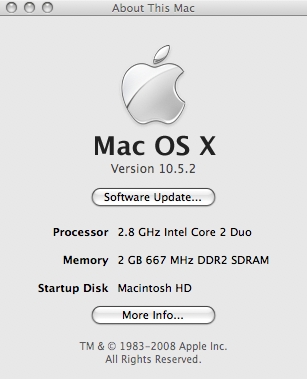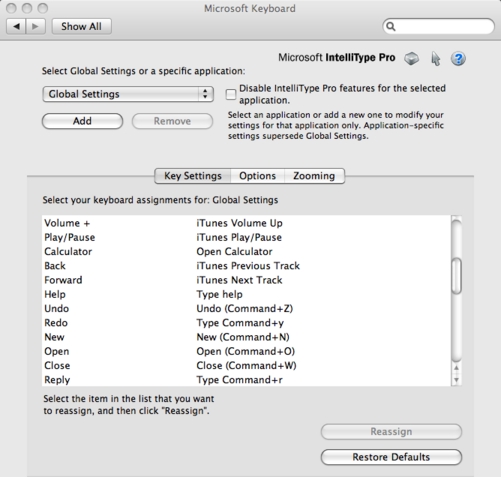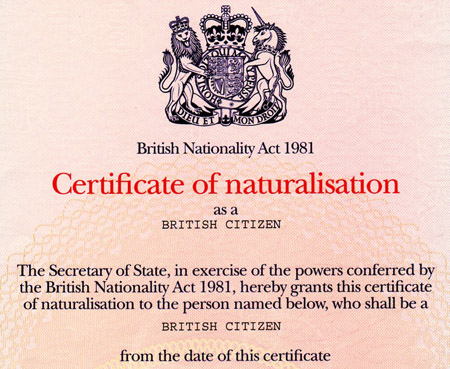by R.I. Pienaar | Mar 12, 2008 | Uncategorized
Previously I posted about my iMac 17″ that I got, that was January 2006 well I have now upgraded to a bigger mac, this time a 24″ iMac Core 2 Duo Extreme with 2GB RAM.

I still have the 17″ and will keep it, it’s replacing my really old AMD Linux Desktop on my desk but the 17″ has been getting a bit long in the tooth with Parallels, MS Office, and all sorts of other stuff that I have been doing on it as I am now working full time from home.
Previously I bought at the bottom of the spectrum and the machine lasted well, but I was hoping to keep it as my primary machine for at least 3 years. I guess my needs have increased though so this time I bought at the top end of the range and will upgrade it to 4GB RAM soon, just not from Apple as buying direct from Crucial will save me about 200 pounds.
What immediately annoyed me – to the point of cramps in my hands and general unhappyness – were this amazingly crap thinline keyboard that comes with the machines. I soon started looking at other options and found no 3rd party Mac keyboards but did notice that Microsoft keyboards have a utility to configure the various additional keys etc so I took the plunge and got a MS Natural Ergonomic 400 keyboard to replace my very old MS Office keyboard.

I am extremely pleased with this keyboard, everything works as it should. The configuration utility lets you configure every key on the keyboard and everything is mapped correctly as expected. Even the function keys like ‘new’ works by sending ‘apple key-n’ etc right out of the box, this is the case with all the MS keyboards on the market today so I can happily recommend any MS keyboard to mac users.
The iMac itself is lovely, I am really happy with it. Speed wise the Core 2 Duo Extreme chip has made a huge improvement, with Parallels running Windows the machine idles at about 2% while I have Firefox, Netnewswire, iTerm, several Terminal.app, Adium, Skype and all sorts of background stuff going, really cannot have asked for more from a desktop machine.
by R.I. Pienaar | Mar 5, 2008 | Code, Front Page
Apache has its native mod_status status page that many people use to pull stats into tools such as Cacti and other RRDTool based stats packages. This works well but does not always provide enough details, questions such as these remain unanswered:
- How many of my requests are GET and how many are POST?
- How many 404 errors and 5xx errors do I get on my site as a whole and for script.php specifically?
- What is the average response time for the whole server, and for script.php?
- How many Closed, Keep Alive and Aborted connections do I have?
To answer this I wrote a script that keeps a running track of your Apache process, it has many fine grained controls that let you fine tune exactly what to keep stats on. I got the initial idea from an old ONLamp article titled Profiling LAMP Applications with Apache’s Blackbox Logs.
The article proposes a custom log format that provides the equivelant to an airplanes blackbox, a flight recorder that records more detail per request than the usual common log formats do. I suggest you read the article for background information. The article though stops short of a full data parser so I wrote one for a client who kindly agreed that I can opensource it.
Using this and some glue in my Cacti I now have graphs showing a profile of the requests I receive for the whole site, but as you are able to apply fine grained controls to select what exactly you’ll see, you could get per server overview stats and details for just a specific scripts performance and statuses:


The script creates on a regular interval a file that contains the performance data, the data is presented in variable=value data pairs, I will soon provide a Cacti and Nagios plugin to parse this output to ease integration into these tools.
The performance data includes values such as:
- Amount of requests in total
- Total size of requests separated by in and out bytes
- Average response time
- Total processing time.
- Counts of connections in Close, Keep Alive and Aborted states.
- Counts for each valid HTTP Status code, and aggregates for 1xx, 2xx, 3xx, 4xx and 5xx.
- The amount of GET and POST requests.
- And detail for each and every unique request the server serves.
See the Sample Stats for a good example, variables are pretty self explanatory. To keep the data set small and manageable 2 selectors exist, one to choose which requests to keep details for and which to keep stats for. These can be combined with standard Apache directives such as Location to provide very fine grained stats for all or a subset of your site.
You would need some glue to plug this into Cacti and Nagios, I will provide a script for this soon as I have time to write up some docs for it.
Install guide etc can be found on my GitHub there is also extensive Perldoc Docs in the script, the GitHub also have links to downloading the script.
by R.I. Pienaar | Mar 4, 2008 | Front Page
Today my UK passport finally arrived, I did have to go for an interview where they re-established that I am who I say I am.
The interview was quite interesting, when I went to write my Britishness Test there were only 4 or so other people at the test and I kind of looked at that as an indication that perhaps, as usual, there is more hype in the media related to immigration than is really needed.
They arrange the interview meetings in blocks of 45 minutes and only allow you in 10 minutes before your block start, so you can know who is in there are all people who are applying for their first passport. I went to the interview center in Elephant & Castle, its a fairly big facility with almost 30 interview cubicles, in my 45 minutes block there were about 80 or so people waiting for the interview.
This kind of brought it home a bit more that yes really there is a massive immigration problem, the interview centers are open 6 days a week and if they are usually anywhere near as busy as when I went – noon on a Friday – then I’d say the rate of immigration is totally unsustainable. It is easier to visualize the problem in a setting like this than to read some big figure in a news paper.
The interview itself was very professionally done, the woman who interviewed me were friendly, thorough and I think the whole thing was actually pretty enjoyable apart from the obvious inconvenience involved. They mostly asked me to confirm what I already filled in on my application forms but also some extra things like what is my Car Registration, what bank accounts I have and when they were opened. It was all simple stuff and went really quick.
by R.I. Pienaar | Feb 13, 2008 | Front Page, Usefull Things
Today on freshmeat I noticed 2 useful utilities for anyone running Xen Servers.
The first is called Virt-top it is a easier to read top like tool than xm top that shows all virtual machines memory and CPU usage in a nice display including totals etc:

The other – Virt-P2V – it’s a CD Image that you can boot a physical machine with that will then convert it to a virtual machine for you. It will scp the drive image to a destination of your choice and create a config file to boot it after asking you some questions. I intend to use this to move a VMWare virtual machine to Xen soon, will post here and see how it goes.
Both of these come from a Red Hat employee, with some luck we’ll see these included in Red Hat Linux soon.
by R.I. Pienaar | Feb 11, 2008 | Front Page
I previously mentioned that got a letter confirming it all went well with my application for naturalisation, the whole process is now more or less done.
I had the ceremony last Thursday and around 11:24 in the morning the Mayor of Greenwich handed me my certificate so I am now all done with that and a full Citizen of the United Kingdom. I arrived here on the 2nd of Feb 2002 and became a citizen on the 7th of Feb 2008. I could have applied last year in March already and probably would have been done with it all around September but I was procrastinating and eventually the noise about the reforms in the immigration laws gave me the kick I needed to complete it.
The biggest advantage I’ll see immediately is of course the passport, traveling as a South African – or in fact being a South African out of South Africa – is such a liability your whole life is just tough, massive headache of visas, immigration time wasting etcetc, endless hassle. In tourist visas alone I spent about GBP500 in the last few years never mind all the time wasted in getting those and even just in queuing in the non EU citizen lines at airports, all gone now! I’ve also had to struggle quite a lot with tenancy agreements for flats that I rent etc as I was never sure if I’ll even be in the country for the year they want you to sign, so had to always get 6 month break clauses put in etc.
This is a part of the certificate I received during the ceremony:

Today I’ll apply for my first UK passport, it should come through in about 2 weeks unfortunately just too late to attend FOSDEM.
The process for applying for citizenship is all hyped up to be this fantastic experience for applicants, a great introduction to the country and its people. This is done through the test you need to pass and a formal ceremony that even includes singing God Save The Queen.
Overall I’d say the whole thing just left me cold, personally I see little point to most of the hoops I had to jump through. I have to say though that the test has some value – it tests that you have a grasp of English and in that function its a success so I’d keep it for that reason. The ceremonies though? waste of time and money in my eye.







